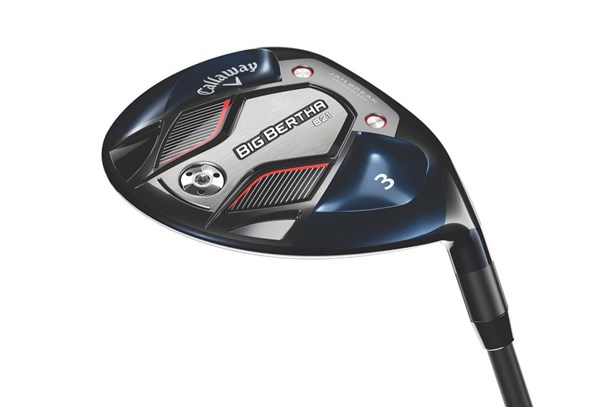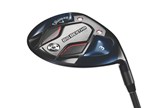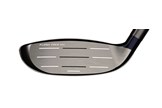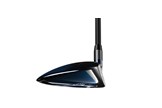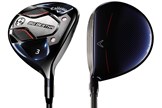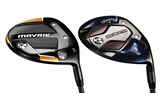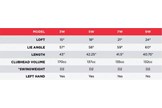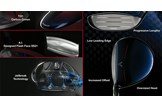Callaway Big Bertha B21 Fairway Wood Review
Last updated:
-
At a glance
- TG Rating
- Owner Rating
What we say...
Callaway want the easy-to-launch Big Bertha B21 to get amateur golfers hitting fairway woods again.
While Tour pros seem to swing faster and hit the golf ball further every week, Callaway are well aware that’s anything but the case for most average club golfers so they’ve launched the super game-improving B21 family to help.
Many clubs golfers avoid using a fairway wood as they struggle to make consistent contact, especially off the ground, but the B21 aims to change that and get players with average swing speeds putting fairway woods back in the bag.
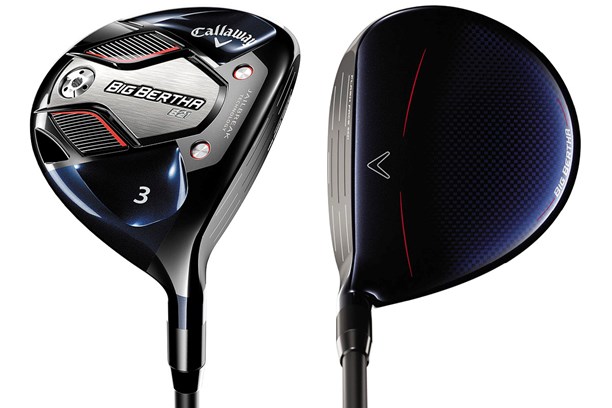
Callaway say it’s their easiest to launch fairway wood and, like the rest of the B21 family, it’s designed to give golfer more “distance any way you swing it”.
It’s easy to hit like a hybrid, with its shallower face, progressive lengths and larger head promoting more distance and better control into the green.
RELATED: Best Fairway Woods 2020
The forgiving design also takes the dreaded slice or big miss out of your game, while more speed across the improved Flash Face SS21 meaning you won’t lose too much yardage from those off-centre strikes.
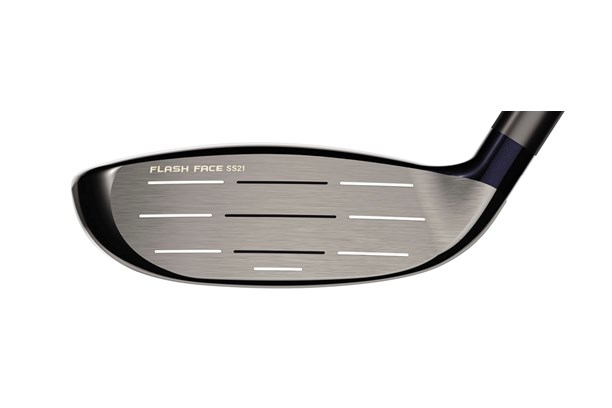
What you need to know about the Callaway Big Bertha B21 fairway wood
As easy to hit as a hybrid
That’s what Callaway say. They have introduced offset into a fairway for the first time to improve contact and encourage a draw.
They’ve also lowered the leading edge because so many amateurs make contact low on the face.
The B21 fairway has progressive shaft lengths and an oversized head shape to help you make consistent contact.
RELATED: Read our Callaway Big Bertha B21 hybrid review
Packed with Callaway tech
Just like Callaway’s Mavrik, the B21 fairway wood has Jailbreak bars behind the face, connecting the crown and sole to create maximum ball speed from whatever swing speed you can muster.
There’s also a stronger and lighter titanium Flash Face, while the a significantly lighter T2C Triaxial carbon crown gives higher MOI for even more forgiveness.
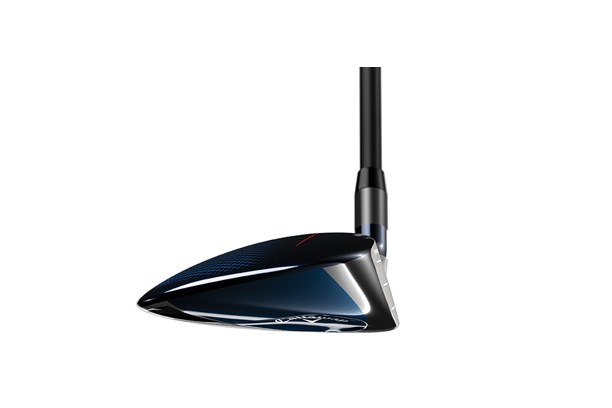
Distance in depth
Available from 3-wood (15 degrees) to 9-wood (24 degrees), Callaway have ensured that every golfer can find the right combination of clubs to maximise their golf game and distance using B21.
Designed for your game
Callaway’s new RCH shaft has been specifically designed for the B21 metalwoods.
A reasonably lightweight construction and an active tip section mean it naturally tries to add loft at impact, so shots are flighted higher to maximise carry.
There’s also a specially selected new grip in Golf Pride’s Tour 360 Soft.
RELATED: Read our Callaway Big Bertha B21 iron review
How to choose between the Callaway Big Bertha B21 fairway wood and Mavrik Max
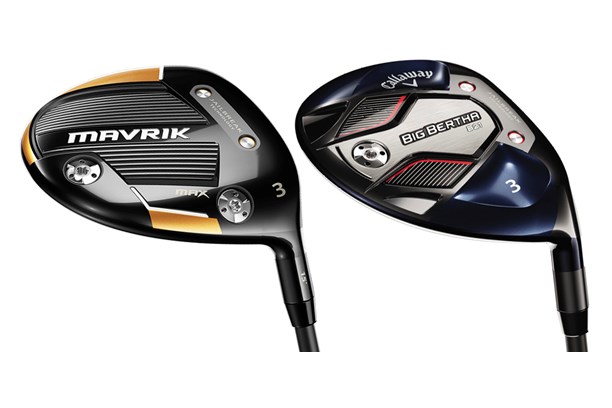
If you hit a slice or struggle to launch a fairway wood, then B21 is probably the right choice, especially with the progressive shaft lengths.
It is specifically designed for golfers who hit down and across the target line, and in doing so create too much backspin. Backspin robs distance and an across the line delivery adds side spin, which compromises accuracy.
Max is the largest, most forgiving and easiest to launch of the Mavrik fairways but testing showed B21 to be longer than Mavrik for many average golfers, simply because they were making better contact.
Think of the B21 as a complete super game-improvement fairway wood and you won’t go far wrong.
RELATED: Callaway Mavrik Max fairway wood review
We asked Dr Alan Hocknell, Callaway’s Head of R&D, for the story behind the B21 fairway wood
These are the longest clubs in the bag that you’ll try and hit without a tee and, for that, some of the swing faults we see in drivers exist here in hitting across the target line, down on the ball and using a large area of the face. These challenges are amplified because the ground gets in the way sometimes, too.
The thing that distinguishes this Bertha fairway wood from others in our line and market is the way we’re using shape. It’s a relatively oversized head that is great for all the forgiveness benefits we’re looking for.
RELATED: WITB – Dr Alan Hocknell
But in terms of improving contact, we’ve introduced offset into a fairway from Callaway for the first time and we’re going to change the face shape, lowering the leading edge because so many impacts occur low on the face.
We want to activate ball speed in that low part of the face and for that we’re going to make the face look a little shallower because there’s a confidence issue with golfers looking at faces that are too deep.
Each of the fairway woods in the bag does a slightly different job. With 3-wood there’s a really high priority on elevation from low on the face. That’s a little different in the 7-wood. We’ve looked at the scatter of impacts on the face, the head speeds – all of these things are inputs to the AI system so we can design with greater fidelity than ever before.
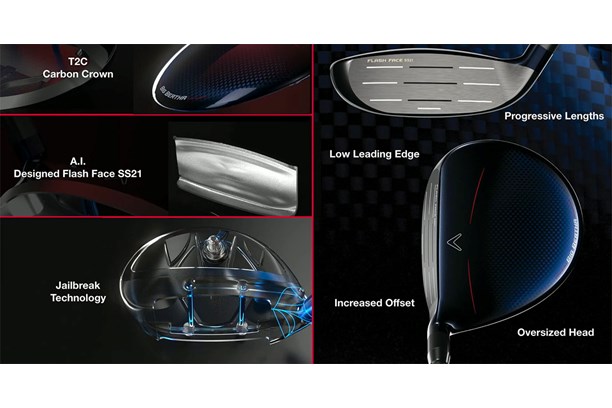
The low-leading edge isn’t the type that will dig into the ground, but it really gets the face down below the ball and allows for better impact, more ball speed generated when people hit low on the face.
Part of the reason people hit low on the face is because they’re afraid of hitting into the ground early because the club is pretty long – we’ve introduced length progression which is intermediate in 3, 5 and 7 between regular fairway woods with the idea that we’re giving people the opportunity to make better contact with the ball.
Even if we lose a slight amount of head speed with a shorter shaft we more than make up for that with the quality of contact, speed numbers and launch numbers.
For a lot of players these woods were longer than Mavrik because they were making better contact. We saw players gain in confidence during the test where we almost had to tell them to cool their jets and hit more normally, or more consistently because they were getting really excited about the results and swinging faster.
RELATED: Callaway Big Bertha REVA range revealed
Consistent with the theme of the whole line, these are the easiest to launch fairway woods in our line. So for those who struggle with elevation, this is the model of choice because time in the air equals distance and the ability to drop the ball on the green and still stop it if you’re using it as a targeting club.
It isn’t adjustable as we wanted a really lightweight hosel so we can really prioritise weight low in the head and, in this case, to the rear of the head to create MOI. That low CG is great for higher launch angle and elevation is the priority.
We want this to encourage people to put fairway woods back in the bag. That dream of hitting those high shots into greens that stop quickly is a lot closer for average golfers using these Bertha woods and we’ve proven it to ourselves.
Callaway Big Bertha B21 fairway wood specs
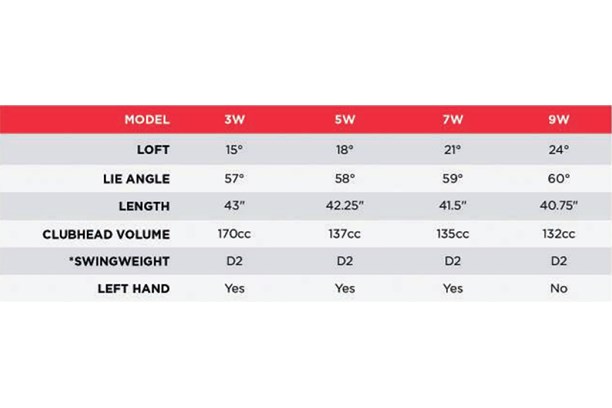

Review written by: Simon Daddow
Job title: Today’s Golfer – Equipment Editor
Product Information
Callaway Big Bertha B21 Fairway Wood
RRP: £279
Lofts: 3W - 15° / 5W - 18° / 7W - 21° / 9W - 24°
Stock shaft: Callaway RCH
Stock Grip: Golf Pride Tour Velvet 360 Soft
Adjustable hosel: No
